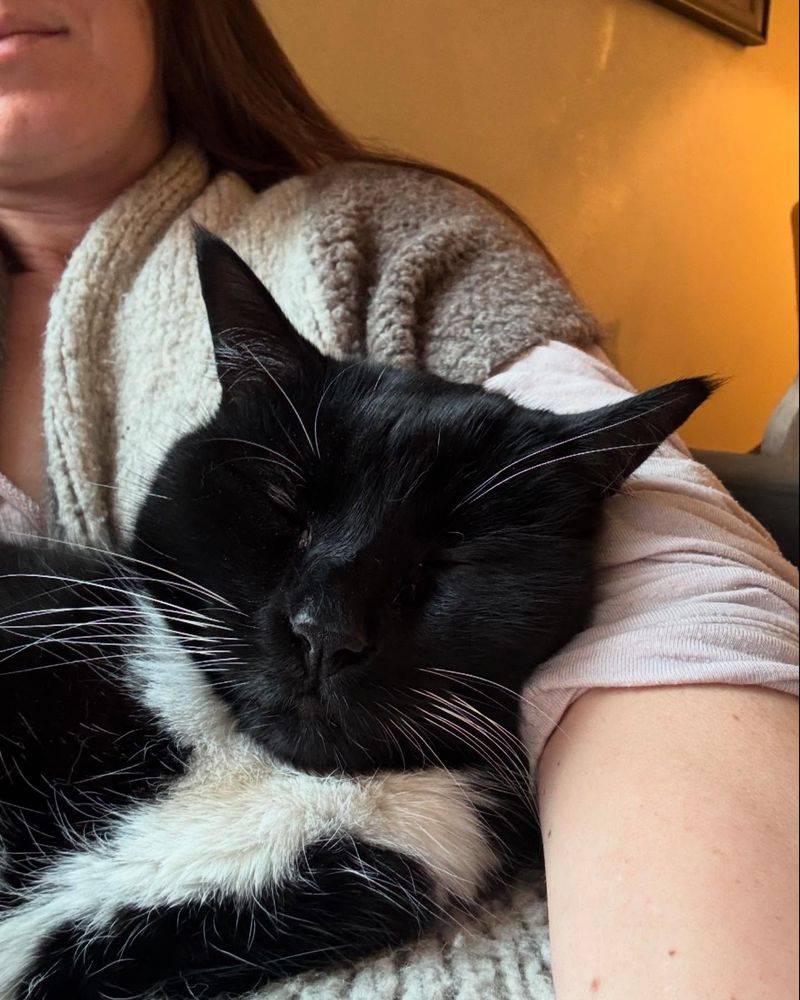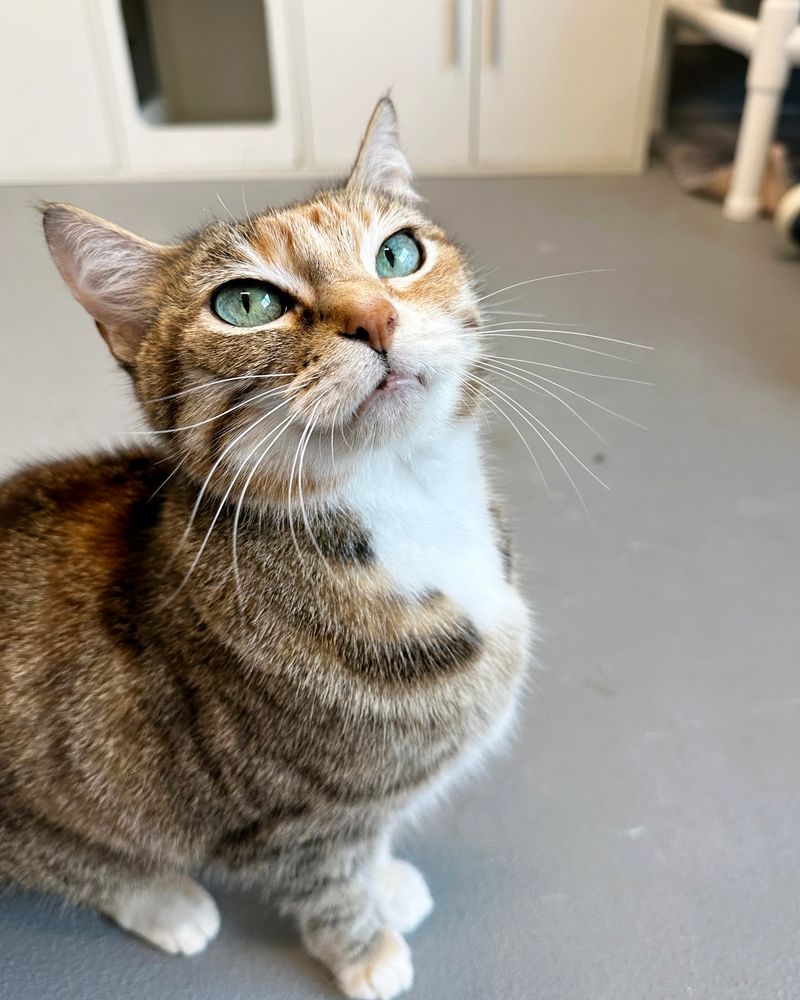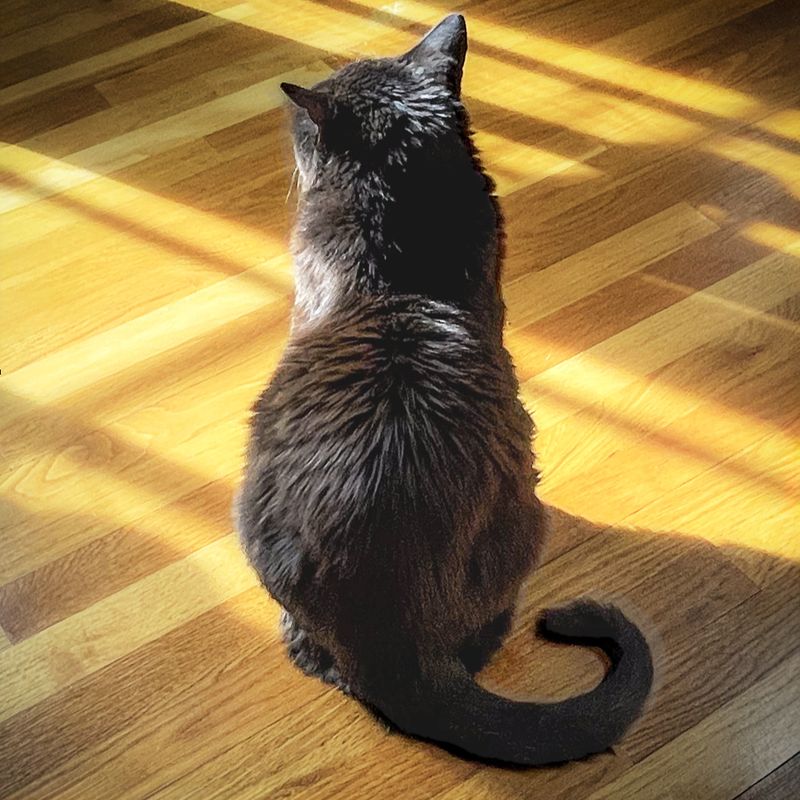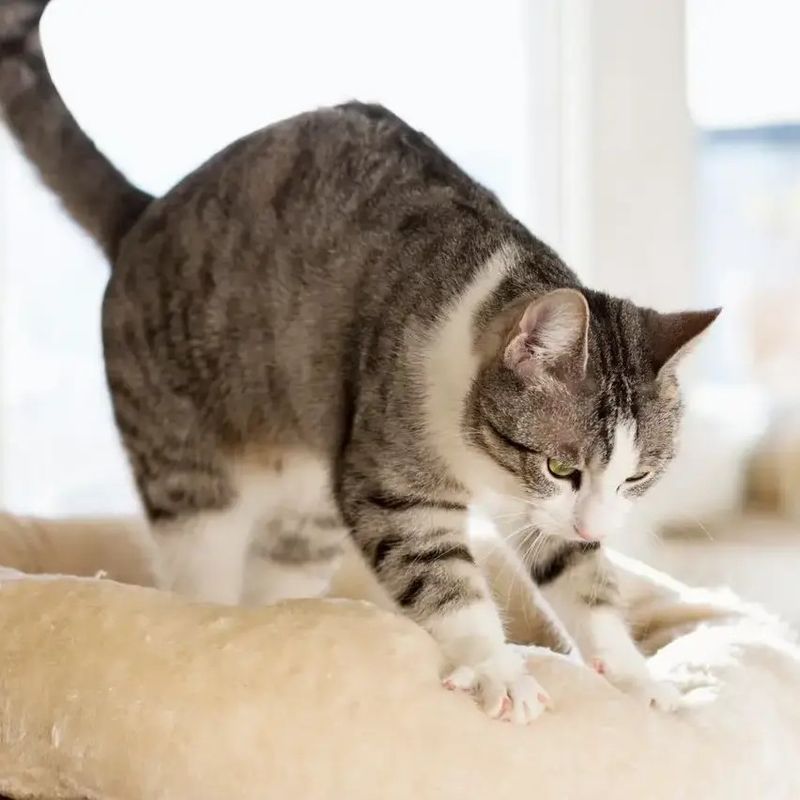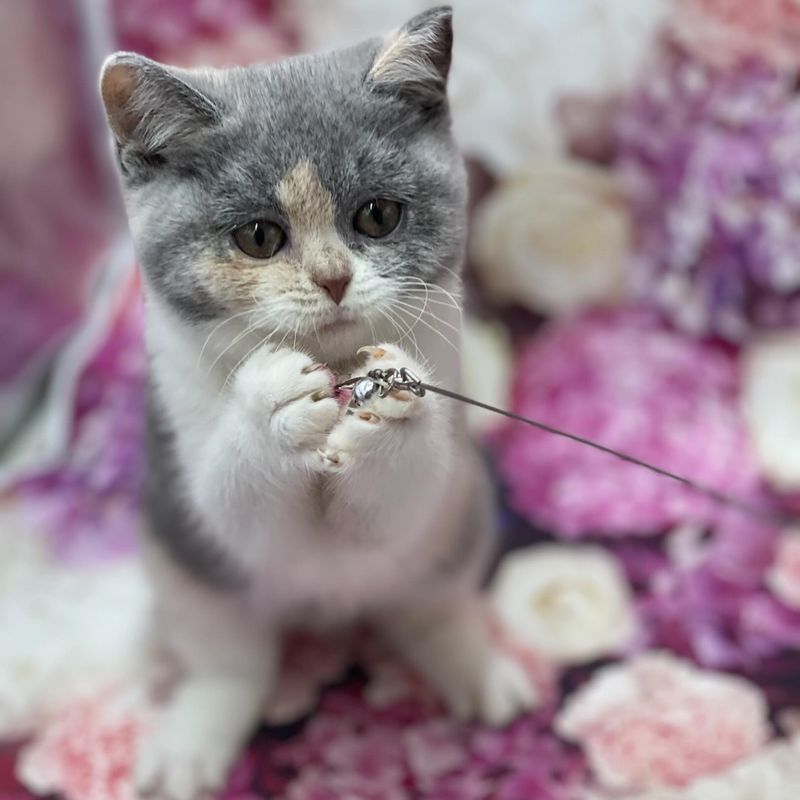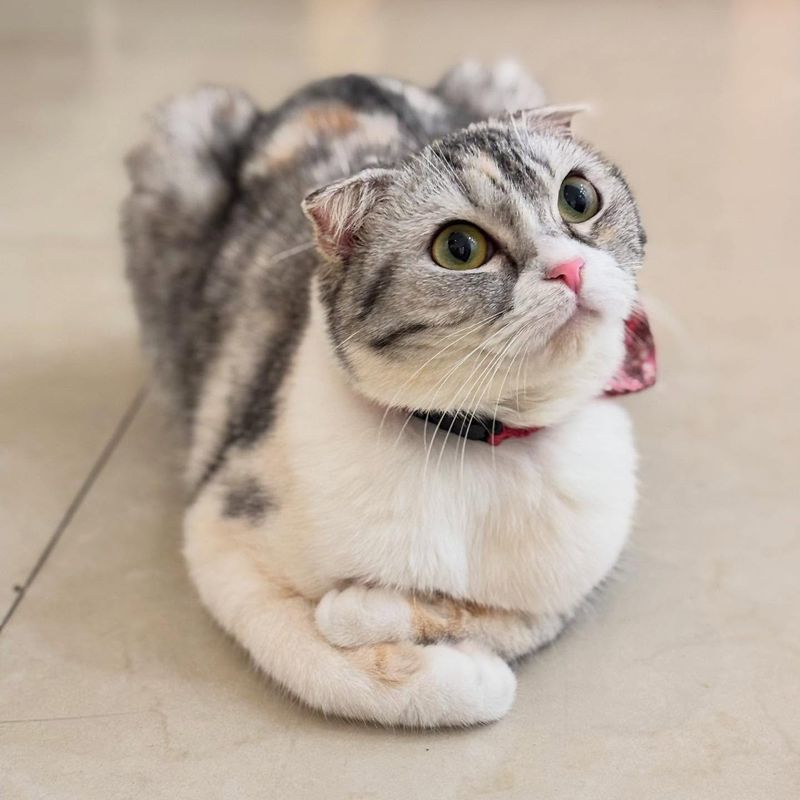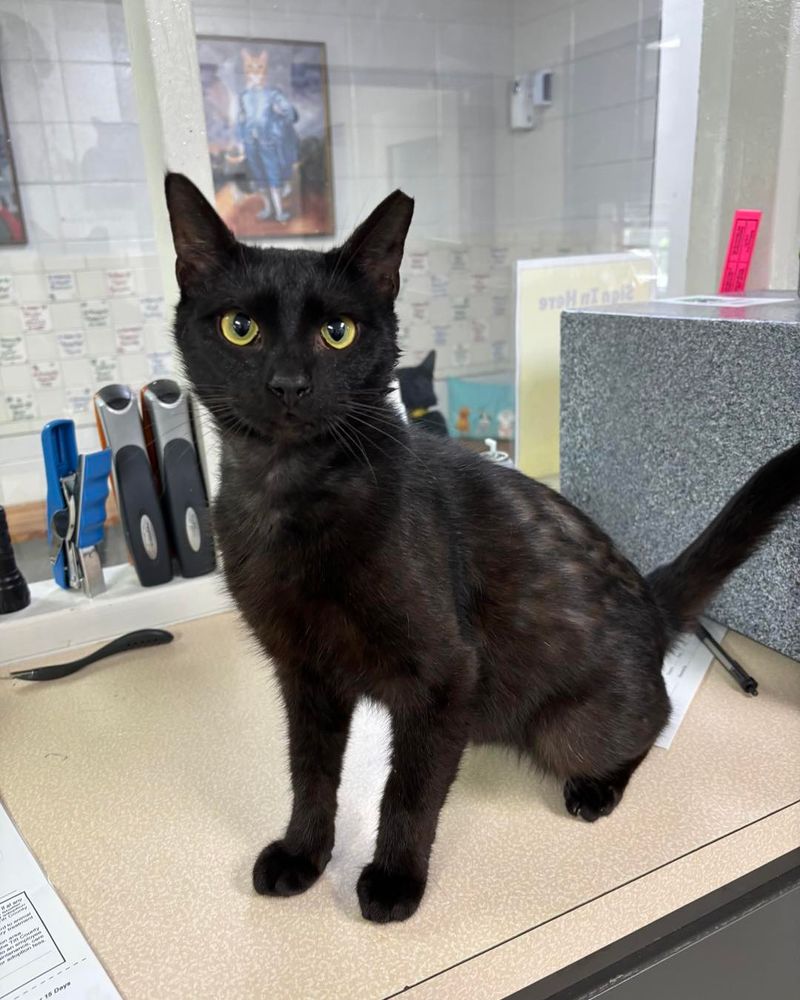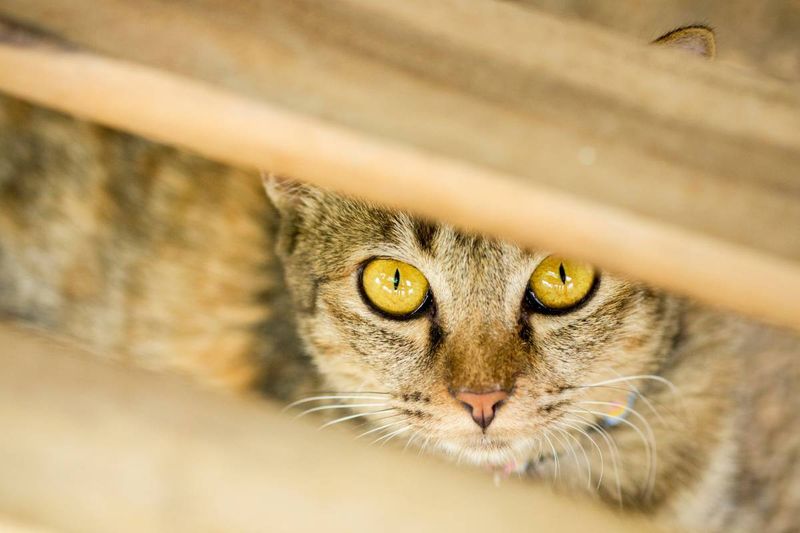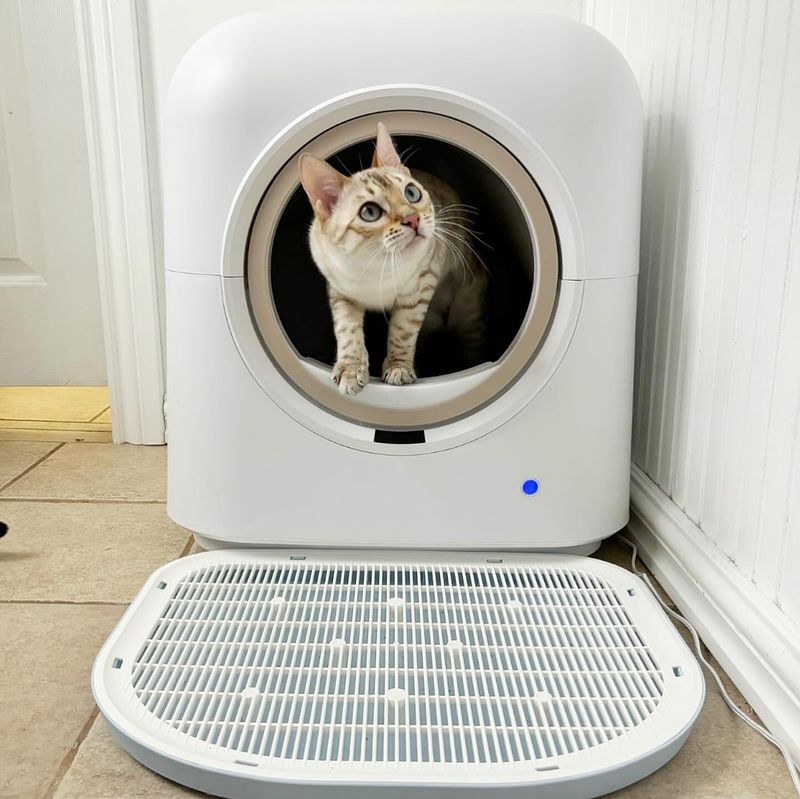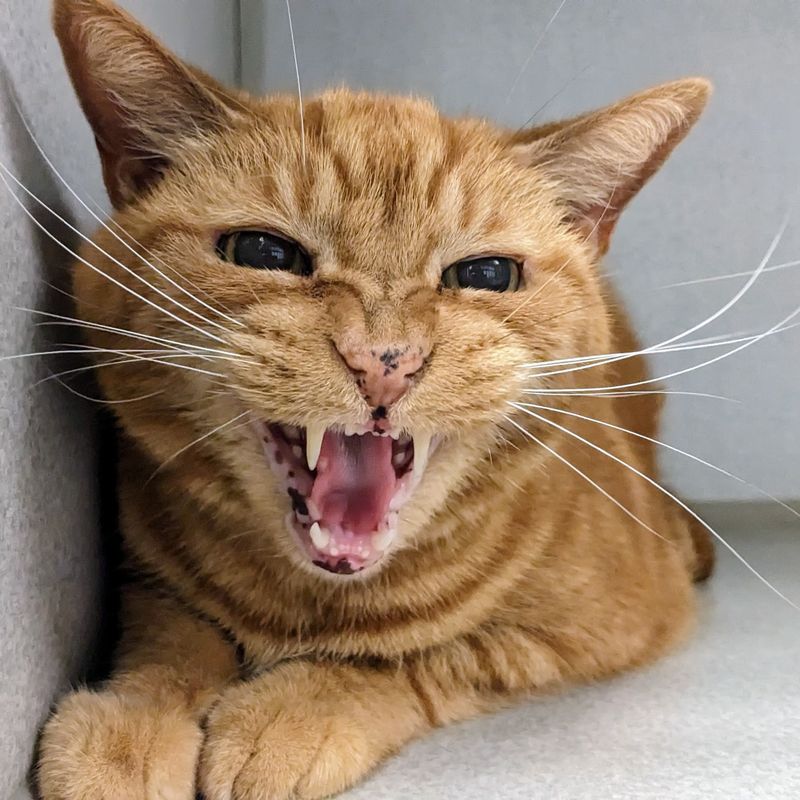📖 Table of Content:
- 1. Yes: Purring With Relaxed Body
- 2. Yes: Slow Blinking Eyes
- 3. Yes: Upright Tail With Slight Curve
- 4. Yes: Kneading Paws On Soft Surfaces
- 5. Yes: Playful Energy And Curiosity
- 6. No: Flattened Ears And Dilated Pupils
- 7. No: Excessive Grooming Or Hair Loss
- 8. No: Hiding And Social Withdrawal
- 9. No: Inappropriate Elimination Habits
- 10. No: Aggression Toward People Or Pets
Our feline friends may not speak our language, but they definitely know how to talk—through body language, subtle signals, and those famous feline expressions. From a slow blink that says “I love you” to a twitching tail that screams “back off,” cats constantly tell us how they feel… if we know how to listen.
In this guide, we’re decoding the signs of true kitty happiness—and the red flags that something’s not quite right. Whether your cat is kneading your lap with bliss or hiding under the bed in protest, these behaviors reveal the emotional world behind those big, curious eyes. Ready to speak fluent cat? Let’s get into it.
1. Yes: Purring With Relaxed Body
That rumbling motor sound coming from your cat often signals pure contentment. When combined with a relaxed posture—loose limbs, slightly closed eyes, and a comfortable position—you’ve got yourself one happy kitty.
Many cat owners mistake all purring for happiness, but context matters. A relaxed cat purring while being petted or while curled up in your lap is experiencing genuine joy. This sound actually releases endorphins in their body, creating a self-soothing cycle of happiness.
The intensity and rhythm of purring can vary between cats, with some barely audible and others loud enough to hear across the room!
2. Yes: Slow Blinking Eyes
Cat experts call this the “kitty kiss”—when your feline friend looks at you and slowly closes their eyes, it’s like blowing a kiss in cat language! This gesture shows they feel safe enough around you to temporarily close their vision sensors.
You can respond by slow-blinking back, creating a special moment of communication between species. Cats reserve this behavior for trusted companions and safe environments where they feel no threat.
The slow blink differs from regular blinking by its deliberate, drawn-out nature, often accompanied by a slightly drowsy, content expression that melts cat lovers’ hearts.
3. Yes: Upright Tail With Slight Curve
A cat’s tail works like an emotional flag, broadcasting their feelings to the world. When your kitty approaches with a vertical tail that curves slightly at the tip (resembling a question mark), they’re expressing friendly excitement and happiness to see you.
This tail position appears most commonly during greetings or when they spot something pleasant—like you returning home or their food bowl being filled. The slight quiver that sometimes accompanies this posture indicates heightened positive emotion.
Wild cats use this same signal with trusted colony members, showing this body language is deeply wired into feline social communication.
4. Yes: Kneading Paws On Soft Surfaces
Those rhythmic paw pushes against blankets, pillows, or your lap connect directly to kittenhood comfort. Kneading—sometimes called “making biscuits”—begins when nursing kittens massage their mother’s belly to stimulate milk flow.
Adult cats continue this behavior when feeling secure and content, essentially recreating those feelings of safety from their earliest days. The intensity varies from gentle pressing to enthusiastic kneading complete with purring and drooling.
Some cats even get a dreamy, far-away look in their eyes during this activity, suggesting they’re experiencing deep contentment that transports them back to those carefree kitten days.
5. Yes: Playful Energy And Curiosity
Healthy cats maintain their natural hunting instincts through play, even when well-fed. A cat who eagerly chases toys, pounces on moving objects, or investigates new items in their environment shows positive mental stimulation and contentment.
Young cats naturally display more playful behavior, but even senior kitties should show moments of playfulness when feeling their best. Regular play sessions help maintain this joyful spirit while strengthening your bond.
Watch for the characteristic play posture: crouched body, wiggling hindquarters, and focused eyes—all signs your cat feels secure enough to engage their natural predatory instincts in a fun, safe way.
6. No: Flattened Ears And Dilated Pupils
When your cat’s ears press flat against their head while their pupils expand to cover most of their eyes, they’re feeling threatened or frightened. This defensive posture prepares them for potential danger and signals they’re far from happy.
Other accompanying body language might include a crouched position, puffed tail, or arched back. These signs mean your cat needs space and calm reassurance, not handling or forced interaction.
Understanding this distress signal helps prevent scratches and bites, as cats displaying these warning signs may lash out if they feel cornered or further threatened by well-meaning but misguided human attention.
7. No: Excessive Grooming Or Hair Loss
Cats are naturally fastidious groomers, but when normal cleaning crosses into obsessive territory, stress may be the culprit. Overgrooming creates bald patches, skin irritation, or hair thinning, especially on easily-reached areas like the belly, inner legs, or base of the tail.
This self-soothing behavior releases endorphins that temporarily calm an anxious cat, creating an unhealthy cycle. Environmental changes, new pets, moving homes, or health issues commonly trigger this stress response.
If you notice your feline friend spending hours licking or developing bare spots, a veterinary visit should be your first step to rule out medical causes before addressing potential psychological factors.
8. No: Hiding And Social Withdrawal
While cats appreciate their alone time, prolonged hiding signals unhappiness or illness. A content cat might nap under the bed occasionally, but one who vanishes for days or flinches when approached is communicating distress.
Happy cats maintain their regular routines—eating, grooming, playing—even if somewhat independent by nature. When these patterns change dramatically and your normally social kitty becomes a permanent recluse, something’s wrong.
Look for hiding spots that provide maximum security, like closets, under furniture, or high shelves. These locations offer both physical barriers and psychological comfort to cats feeling vulnerable, making them perfect retreats when your feline friend doesn’t feel safe or well.
9. No: Inappropriate Elimination Habits
When your previously well-trained cat starts avoiding the litter box, they’re waving a red flag about their well-being. This behavior change might stem from medical issues like urinary infections or from psychological distress caused by household changes.
Cats sometimes “protest” by urinating on personal items like beds or clothing when feeling anxious or territorial. The strong scent connection helps them feel more secure by marking their environment with familiar smells.
Location matters too—cats avoiding litter boxes placed in high-traffic or noisy areas show they’re seeking more privacy and security. This behavior rarely resolves without addressing the underlying cause, whether physical or emotional.
10. No: Aggression Toward People Or Pets
Unprovoked swatting, hissing, or biting suggests your cat feels threatened or frustrated. While playful nips during games are normal, genuine aggression comes with warning signs: pinned-back ears, thrashing tail, and tense body posture.
Previously friendly cats turning hostile often respond to territory threats, pain, or fear. New pets, visitors, or even furniture rearrangement can trigger defensive behaviors in sensitive felines.
Redirected aggression happens when cats can’t reach the actual source of their frustration—like an outdoor cat they spotted through a window—and instead lash out at whoever’s closest, including beloved owners. This misplaced reaction confuses many cat parents who don’t understand the sudden personality shift.

